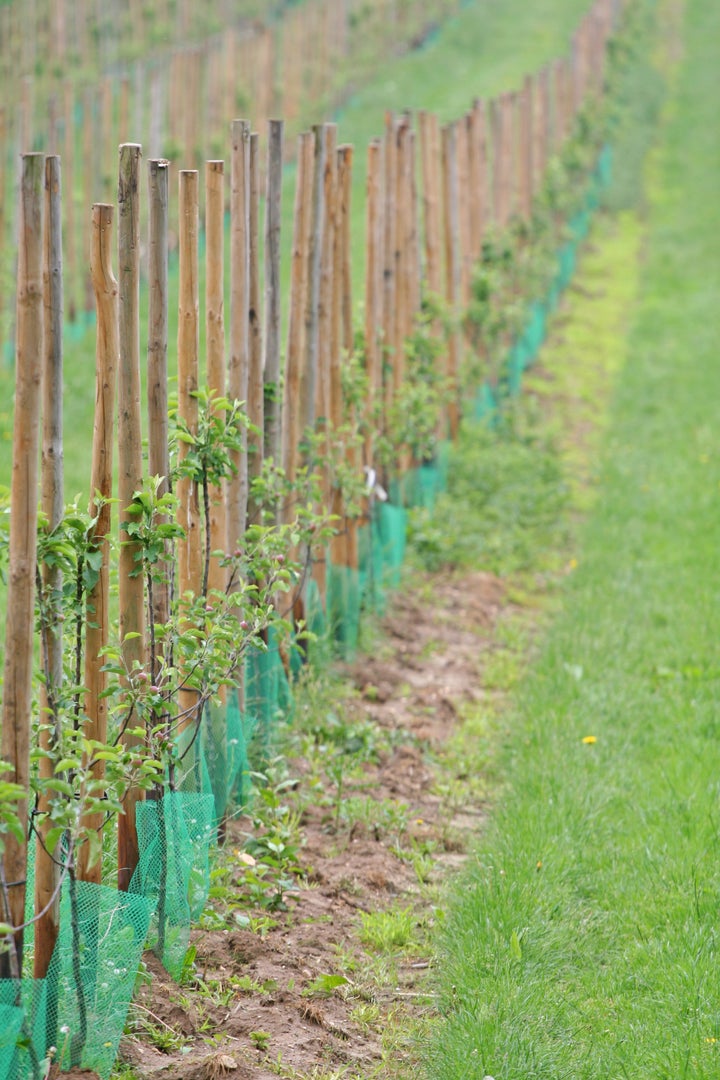
The introduction of the new book from Food First and Groundswell International “Fertile Ground: Scaling agroecology from the ground up” offers a bold statement,
“There are about 2.5 billion people in the world, on 500 million farms, involved with smallholder family agriculture and food production. Their creative capacity to farm productively and sustainably with nature, instead of against it, is perhaps the most powerful force that can be unleashed to overcome the interlinking challenges of hunger, poverty, climate change, and environmental degradation. This is the essence of agroecology.”
Agroecology—and agricultural development—are sometimes seen as a something to be offered underdeveloped countries having trouble feeding themselves. Or, like organic agriculture, agroecology is often viewed as a nice idea for “niche” farmers producing for high-end, specialty markets. But can agroecology also be part of a broad-based strategy for rural development, in the developing world and the United States? We think so. And in ways you may not have imagined.
Donald Trump’s “billionaire populism” has squeaked its way into the White House, in part with promises to end the ravages of globalization and bring back manufacturing jobs to the U.S. heartland. An end to the Trans-Pacific Partnership, massive deportations, a big wall on the Mexican border, the renegotiation of the North American Free Trade Agreement, and some arm-twisting of U.S. corporations seem to be his answers to the economic devastation visited on the U.S. working class over the last thirty years of laissez-faire, free-market neoliberalism.
These measures won’t reverse the job losses due to automation, and unless American workers are willing to accept much lower wages, it’s doubtful any corporations will be moving back from Asia anytime soon. But will building a wall and sending immigrants out of the United States open up jobs for U.S. citizens?
Most immigrant workers in the United States labor in food, agriculture, construction, and hospitality services. Many of these workers came from the farming sectors in Mexico and Central America. In addition to the legacy of wars and violence (that the United States played a major role in), they are fleeing the destruction of their rural economies thanks to NAFTA, CAFTA, overproduction, low farm-gate prices, and the spread of large-scale, soy, palm oil and sugar cane plantations, and highly-polluting, extractive industries. Climate change has made it much more difficult to farm—both north and south of the border. Sound familiar?
The “heartlands” of the United States and its southern neighbors need a better way of farming and eating—and a better political and economic model. Can we improve the livelihoods of poor and middle-class people in both the global north and global south? A sustainable solution to poverty, unemployment, migration and climate change will require rebuilding the countryside in North, Central and South America. But how? Trends in industry and manufacturing typically depopulate and reduce wages in the countryside.
“As much as possible, we need to incentivize local food production, processing, and consumption. And we need to incentivize agroecology.”
One way is to make family agriculture an attractive livelihood option again. This will mean changes to both farming practices and to the prices paid to farmers. As much as possible, we need to incentivize local food production, processing, and consumption. And we need to incentivize agroecology. Just this would create more jobs in farming and raise the value of agricultural products and labor. As Iowa farmer and former president of the National Family Farm Coalition, George Naylor suggests,
“What if each farm had a quota based on their history of production and an assessment of how a good crop rotation along with conservation plantings could regenerate the soil and biodiversity? What if farmers were compensated with a price that stabilized his or her income? Their thinking and practices would be the opposite of the laissez-faire, free market straightjacket. If a farm has a quota of 10,000 bushels of corn, that farmer would think, “How can I produce 10,000 bushels of corn with the least amount of chemicals and fertilizer and the most amount of conservation? Maybe I could use some of the other land for soil-saving hay and pasture to feed a new herd for grass-fed beef or dairy.”
If coupled with a fair floor-price, this would go a long way to incentivize agroecology, in both the Northern and the Southern hemisphere. If governments would provide tax breaks and funds for reforestation, carbon-capturing soil regeneration and the composting of organic waste, it could further open opportunities for generating more income in the countryside. What would likely result?
First of all, farmers from the Global South would not have to abandon farming. Since manufacturing largely draws its labor from poor, rural communities, fewer farmers looking for jobs in industry would put upward pressure on industrial wages. If wages rise outside the United States, there would be more incentives for companies to keep jobs inside the country and new and better opportunities for both local economic development and international trade. Things we need, like soil fertility, seeds, pest control, water management that require approaches that can best be met locally, would help keep the rural dollar close to home.
“Unfettered and globalized capitalism has not only hollowed out the heartland by destroying local economies, it has eroded democracy, concentrated wealth and power, and exacerbated climate change.”
The very composition of business would change—away from the agri-business conglomerates which extract wealth and displace local economic wellbeing, towards local businesses, family farms, cooperatives, food hubs, and school feeding programs in which farmers have a stake, ownership, and more income. Different forms of human and social capital and environmental capital and new infrastructure will increase in ‘heartland’ communities rather than decrease. So the flow of people and resources out of farming and rural areas would decrease in the North and the South, based on more democratic economic and political structures of production and consumption.
In this sense, agroecology is not just a set of techniques but a wider approach to improve and democratize our lives and our economic and political systems. To spread it, there is much practical work to be done at multiple levels, and the agency of family farmers, consumers and citizens is key everywhere.
Unfettered and globalized capitalism has not only hollowed out the heartland by destroying local economies, it has eroded democracy, concentrated wealth and power, and exacerbated climate change. Donald Trump is right about this (though it didn’t trouble him until he ran against Hillary Clinton), but building walls, isolationism and extractive industries will make things worse. We need a bottom-up strategy to rebuild, restore and democratize agricultural economies. Agroecology has an important role to play.
Eric Holt-Giménez, Food First
Steve Brescia, Groundswell International
